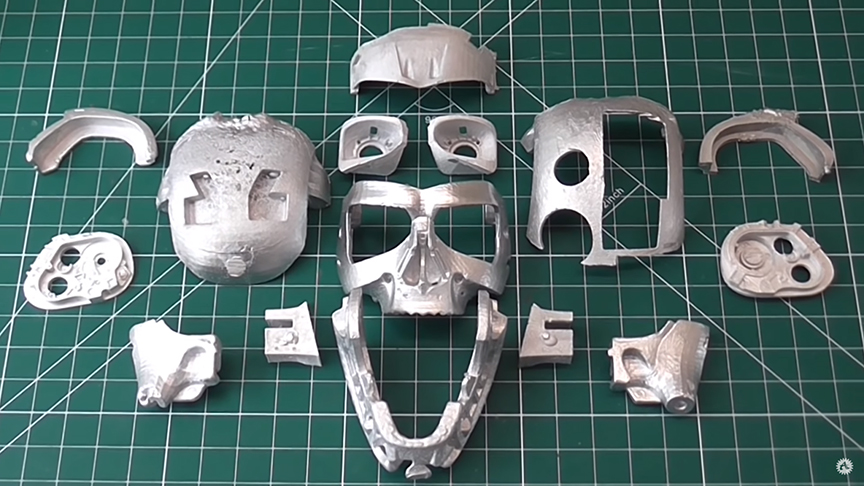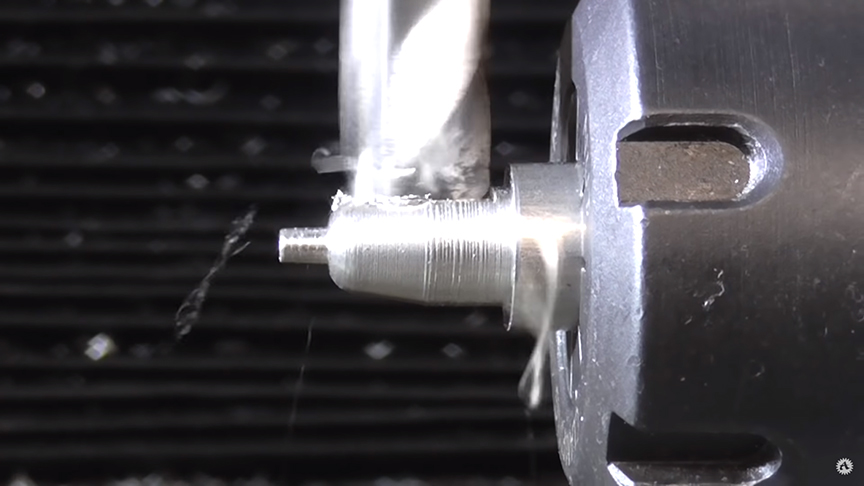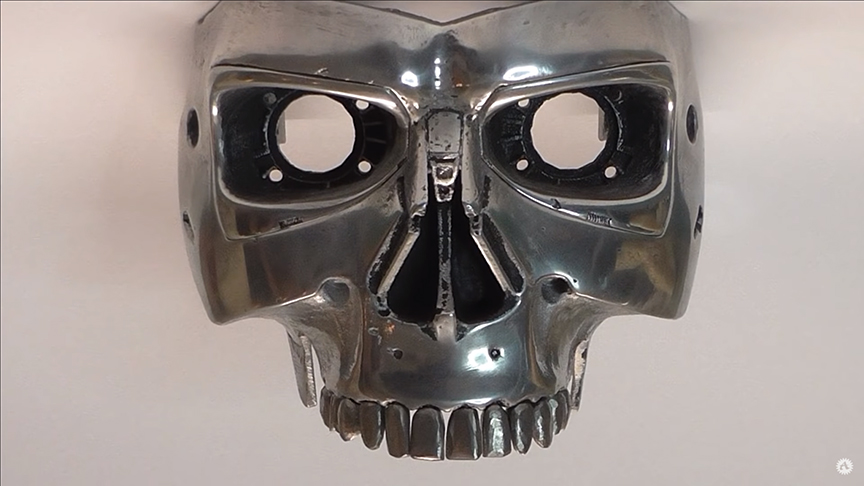YouTube recommendations can lead down some strange rabbit holes sometimes.
My own recommendations mainly consist of videos of people eating 50-year old MRE rations and Finnish people crushing things in hydraulic presses. Both great channels.
And sometimes, the recommendation algorithm can lead to wonderful and informative little gems, such as this video from YouTuber AndysMachines, who has used lost PLA casting (and a whole bunch of other manufacturing processes) to fashion a metal Terminator skull.
We like the Lost PLA method of casting around here. We have looked at its ancestor, lost wax casting has been evolving in Industry 4.0 before in this previous article.
While 3D printing does play a fairly small (but significant) role in the creation of the skull, the entire process itself is great to watch and shows how much skill and patience is involved in making such an item from scratch.
You can see the first step of the skull manufacture in the image below. Here we see the various skull pieces printed from PLA.

As we mentioned in the previous article, the lost PLA casting method can significantly reduce the manufacturing steps in making metal parts compared to more traditional investment casting methods.
Using 3D printing to make the pattern cuts out all of that fuss of forming the pattern in wax (by hand or tool) found in traditional investment/wax casting, and provides the manufacturer with a digital 3D replica of whatever it is that is to be cast.
After the parts are printed, they are then placed into individual casting flasks, as you can see in the image below.

Next the flasks are filled up with investing plaster and fired in a kiln to burn the PLA (or traditionally wax) out, leaving a mould cavity in the plaster to cast the metal into.
The molten aluminium is then poured into the cavity, producing the individual metal cast pieces which must then be cleaned up and assembled.

Here are the cast aluminium parts. They look pretty good, but the video shows how much work is needed to clean these parts up until they are awesome. Casting is great at making near-net shape parts but often need cleaning up in terms of removing sprues and runners, and also can require surface finishing of some kind.

Here for example, we see some machining to make the head holes nice and round.

Next in the video, we see a lot of welding and filing in order to blend the joined components into a smooth uninterrupted surface. After manual filing and blending, the skull is polished.

Every component in the skull is meticulously manufactured. Here we see a smaller component being milled in the chuck.
The smaller piece is turned so a cylindrical peg is created at the tip of the piece… can you guess what the part is?

Yes, it is a tooth! The teeth are taken from the chuck and filed to a more irregular and natural shape. The cylindrical pegs are used to anchor the teeth into the gums.
With a mouth full of metal dentures, the skull is beginning to take form.

The jaw pistons are also fabricated from scratch, with each part being machined on the lathe.

Finally, the eyes are turned and details are added to the eye balls.
And voila. A completed skull so beautiful that we used it as an excuse to write an article about how great lost PLA casting can be…

As you can see, the results obtainable with a small home workshop (and a lot of skill) are pretty amazing, and serve as a great reminder of the benefits of lost PLA casting.
With lost PLA casting you don’t have to fashion a pattern out of beeswax by hand, and the moulds are highly repeatable thanks to the wonders of CAD and 3D printers.
You can get great results with a cheap printer, as long as you have a reasonably well equipped workshop, and a fair amount of skill and patience!
You can see the full video of the processes used to make the skull in the video below.

